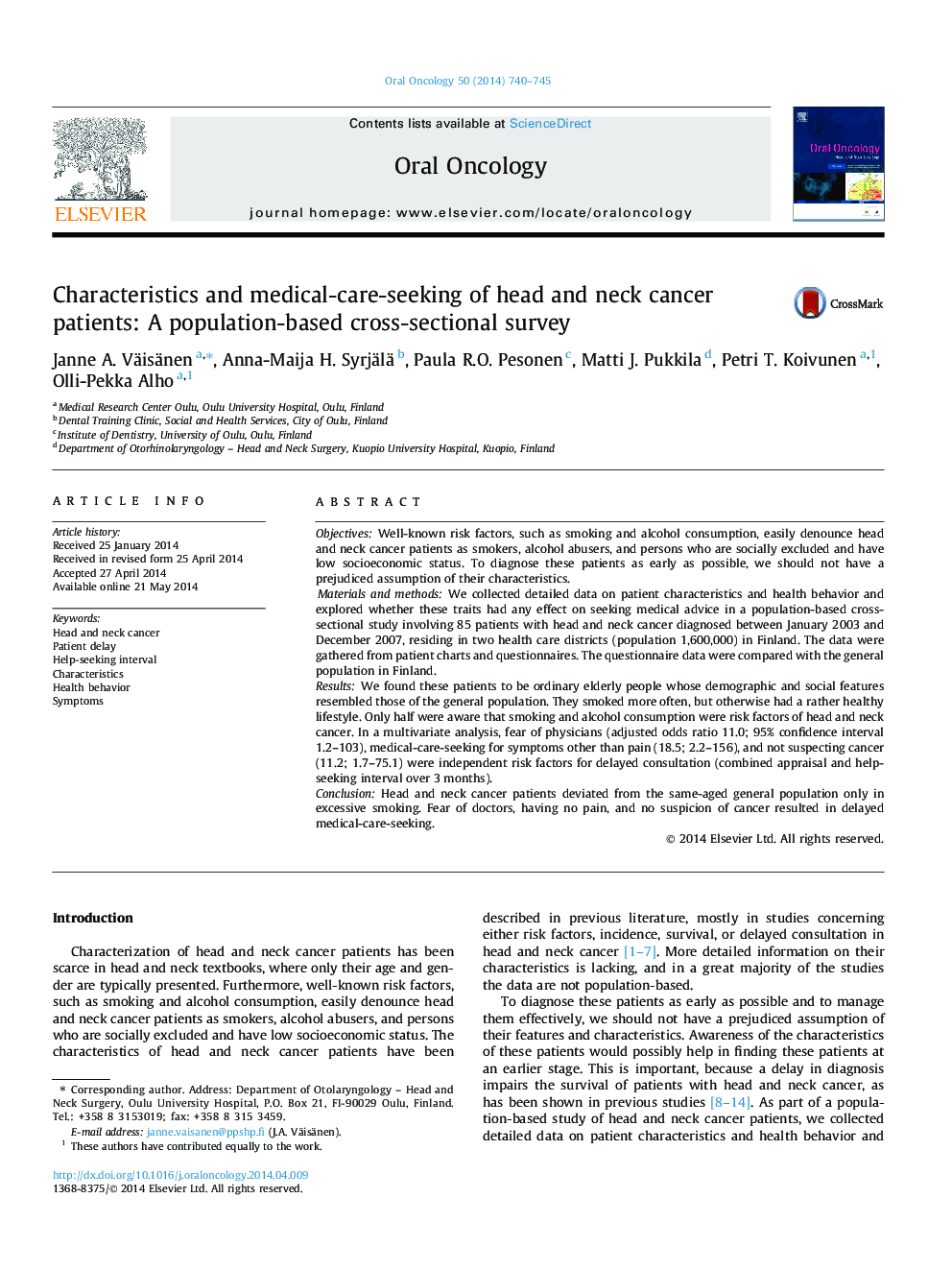| Article ID | Journal | Published Year | Pages | File Type |
|---|---|---|---|---|
| 3164178 | Oral Oncology | 2014 | 6 Pages |
ObjectivesWell-known risk factors, such as smoking and alcohol consumption, easily denounce head and neck cancer patients as smokers, alcohol abusers, and persons who are socially excluded and have low socioeconomic status. To diagnose these patients as early as possible, we should not have a prejudiced assumption of their characteristics.Materials and methodsWe collected detailed data on patient characteristics and health behavior and explored whether these traits had any effect on seeking medical advice in a population-based cross-sectional study involving 85 patients with head and neck cancer diagnosed between January 2003 and December 2007, residing in two health care districts (population 1,600,000) in Finland. The data were gathered from patient charts and questionnaires. The questionnaire data were compared with the general population in Finland.ResultsWe found these patients to be ordinary elderly people whose demographic and social features resembled those of the general population. They smoked more often, but otherwise had a rather healthy lifestyle. Only half were aware that smoking and alcohol consumption were risk factors of head and neck cancer. In a multivariate analysis, fear of physicians (adjusted odds ratio 11.0; 95% confidence interval 1.2–103), medical-care-seeking for symptoms other than pain (18.5; 2.2–156), and not suspecting cancer (11.2; 1.7–75.1) were independent risk factors for delayed consultation (combined appraisal and help-seeking interval over 3 months).ConclusionHead and neck cancer patients deviated from the same-aged general population only in excessive smoking. Fear of doctors, having no pain, and no suspicion of cancer resulted in delayed medical-care-seeking.
